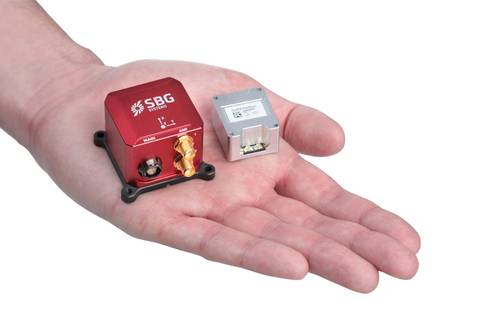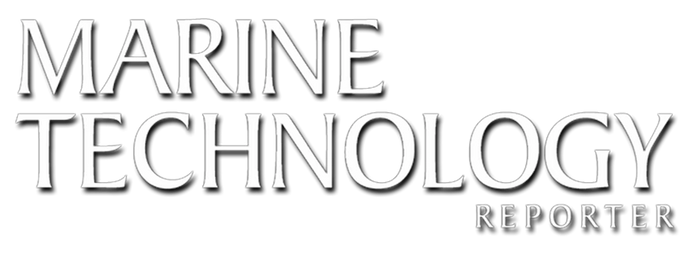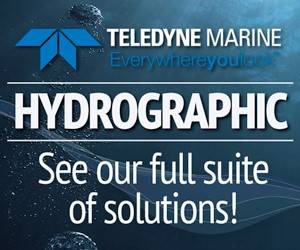How to Choose the Best Inertial Solution for your Application and Accuracy Needs
All kinds of surveying, and more generally, oceanography and hydrography, need an inertial sensor. These solutions range from MRU to high-end INS/GNSS, and their selection shouldn’t be taken lightly. It is crucial to select the right sensor depending on the type of application and its needs. This is the reason why we put our different products lines to the test during a 3-day survey with a multibeam echosounder in 3 areas of the port of Hamburg (Germany): Hamburg’s docks, under bridges, and in the city’s river channels. Being able to attest our solutions’ performance in various environments and at several levels of accuracy was key to being able to recommend which INS to use depending on the application and conditions.
Small Marine Integrations and Surveying in Very Shallow Waters
Hydrography doesn’t involve only surveying on large vessels but also includes AUV, USV, or even buoys. Considering the size of such applications, a miniature and robustinertial sensor can prove to be ideal. SBG Systems’ miniature Ellipse product line ranges from AHRS to dual-antenna RTK GNSS/INS in small IP68 enclosures. Robustness being crucial in marine applications, all SBG Systems’ MRU and INS benefit from an individual high-end calibration procedure from -40 to 85°C. The inertial sensors go through a strict screening process, removing all sensors that don’t meet the specifications so that professionals can count on consistent measurements during their missions.

Ellipse-D Miniature Dual-Antenna RTK GNSS/INS Learn More
Ellipse sensors deliver a 5-cm accurate real-time heave that automatically adjusts to the wave period and provides unmatched performance in attitude (0.05°) and heading (0.2°).
In addition to buoys, small USV, and AUV solutions for navigation or surveying, these inertial sensors can also compensate and stabilize a single beam or side scanechosounder. However, they can only offer optimal performance in open-sky surveys in very shallow waters (< 10 meters) in near-shore areas with low motion, offering a cost-effective package for these types of surveys.Indeed, the Ellipse’s RTK Heave directly provides a precise altitude, which is well-suited for near-shore surveying.
Open-Sky and Shallow Surveys
The bathymetric and inertial data collected during the survey show that all sensors deliver highly accurate motion, heading, and position in an open-sky and shallow water survey. While the Ellipse is not recommended for high-accuracy MBES surveys, the Ekinox, or NavsightEkinox, is the best-fit solution and can provide an attractive package in real-time for open-sky and shallow surveys in coastal areas.
The Ekinox Inertial Navigation Systems come in either all-in-one industrial-grade sensors ranging from MRU to high-end RTK INS/GNSS or as part of the Marine solution. Both provide the same performance and accuracy: 0.02° Roll/Pitch (RTK), 0.05° GNSS Heading, and centimeter-level position.
As all-in-one compact sensors, they can be integrated into equipment where space is critical, such as USV for hydrographic surveys.
Navsight with subsea Ekinox grade IMU Learn More
Designed to ease hydrographers’ tasks, the Navsight Marine Solution comes as a Motion Reference Unit (MRU), providing roll, pitch, and heave, or as a complete Navigation Solution embedding a tri-frequency GNSS receiver or using an external GNSS receiver. The Ekinox IMU is connected to the processing unit. This very practical set-up allows the IMU to be located close to the echo-sounder while the processing unit is in the cabin and connected to the operator’s computer.
An Inertial Solution for Each type of GNSS Outages
GNSS outages can happen in various environments, including when navigating under bridges or surveying river channels and ports facilities. They represent a challenge for all hydrographic surveys and highlight the necessity of an inertial navigation system coupled with GNSS, which fuses inertial and GNSS data for a continuous higher accuracy trajectory.
The survey results under the bridges revealed that the inertial sensor allows to maintain suitable accuracy thanks to its enhanced RTK, attitude, heading, and heave data. Heading appears to be much more stable with the Navsight Apogee, as it embeds higher performance gyroscopes. This solution also provides more precise inertial and position data, making it the right choice for this application. GNSS outages can also be fixed by post-processing the survey data with SBG Systems’ post-processing kinematic (PPK) software called Qinertia. The combination of both Apogee and Qinertia allows a reliable and extremely accurate solution in long GNSS outages.
Navsight with subsea Apogee grade IMU Learn More
River channels are much tougher areas to deal with compared to long GNSS outages situations because of strong GNSS multipath effects with small outages in GNSS. In these conditions, it is impossible to rely solely on Loosely coupled inertial solutions as the multipath effect affects GNSS dual heading and position computation, which increases the noise in heading and position errors. In addition to a high-end and versatile INS/GNSS that delivers stable roll/pitch data, this environment requires tight coupled post-processing to filter the multi-path effect. PPK computation enhances heading and motion, and tight coupling significantly improves position. Highly performant, the Navsight Apogee solution (0.008° Roll/Pitch, 0.015° GNSS Heading, and centimeter-level Position) provides, along with Qinertia PPK software, the optimum package in such conditions. It also enables high-accuracy surveys in deep water, even offshore.
While the Ekinox and Apogee motion and navigation solutions are MEMS-based, the Navsight Horizon integrates a closed-loop FOG IMU that allows robust and consistent performance in the most demanding environments like highly dense areas or low dynamic surveys.This system data has been post-processed and used as a reference system for the surveying tests in Hamburg, providing the highest performance.
Furthermore, SBG Systems sensors are compatible with all Hydrographic software that accept ASCII, NMEA, and TSS protocols. Other software have developed drivers that fit with SBG’s binary protocol, facilitating the sensor’s integration.
Real-time or Post-Processing?
In these different surveys, post-processing has proved to improve survey results in the harshest conditions. While some applications do not require PPK computation like open-sky surveys where real-time data is extremely accurate, environments where GNSS reception is a challenge make the use of post-processing software mandatory to ensure the best performance. Forward and backward computation and cutting-edge PPK algorithms help achieve the highest level of accuracy.Robust against the multi-path effect, tight couplingis essential in such conditions.
Post-processing may seem time-consuming and complicated to some hydrographers, but Qinertia has been designed as an easy-to-use tool to help surveyors. Efficient, fast, and straightforward, this full-featured GNSS only and INS/GNSS post-processing software gives access to offline RTK corrections from more than 8,000 base stations located in 164 countries. It supports third-party IMUs and all GNSS receivers and includes a VBS (Virtual Base Station) feature and PPP computing. This cost-effective solution allows surveys even in harsh conditions and allows installation parameter corrections afterward to save the day!
Navigate through the results on SBG Systems’ website.

